Internal links help you build a user experience that helps both people and search engines navigate your site.
But it can be difficult to understand exactly how to create an internal linking strategy, or how to make the most of your anchor text.
So, in this article, we're going to talk about the basics of internal linking, explain how anchor text really works, and then take you through a real life example of how it can impact your site.
We'll talk about:
- Internal linking
- What are internal links?
- Internal linking for SEO
- Internal and external links
- Internal link structure
- Anchor text
- What is anchor text?
- Why is anchor text important to on-page SEO?
- Types of anchor text
- Key facts about internal linking and anchor text
- The impact of better anchor text and internal links
- The anchor text opportunity
- Better anchor text: The results
- Why you should improve your anchor text and internal linking
For our client, one small change to their internal linking increased views across the updated pages by 88%, including a 570% increase for one of their highest ranking articles.
Not bad for less than an hour's work.
Want to find out how we did it? Read on!
Internal linking
A well thought out internal link strategy is a great way to improve your SEO, but it helps users too - it really is a win-win!
What are internal links?
An internal link is simply a link from a page on your website to another page on the same website.
What's great about them is that they help you create a site content structure that makes it easy for users to navigate around and get where they want to go - therefore also decreasing your bounce rate.
And that's not just useful for users - it helps search engines too. Internal linking done right can be transformative for your website, as it improves user experience and SEO at the same time.
Internal linking for SEO
So, are internal links good for SEO? Absolutely they are!
When Google is crawling your website to index pages, it gets to each page using links. When you link up the pages in your website, it helps Google navigate to each of your pages.
So when you post a new blog, it can take a while for it to get indexed on Google. But if you link that post from other pages on your website, it's much easier for search engines to find.
The benefits of internal links are that they also help Google to understand what pages on your website are most important. If a page has lots of internal links pointing at it (such as your home page), then search engines will know that it's an important page.
So essentially, internal links help Google understand the hierarchy of your pages, as well as what those pages are about.
Internal and external links
People often think that internal and external links are completely different when it comes to SEO, but they both work on similar principles.
Search engines use external links to understand how other people view your website. They see them almost as votes of confidence, and the more trustworthy the linking website, the more value from the link.
Of course with internal links, you're linking from and to your own website, but Google still uses the links in a similar way, to judge which pages on the website are the most important.
Pages on your site with lots of internal links will be viewed by search engines as more significant than those with only a few.
That's why having an internal linking structure can really help you both with UX and SEO, by helping search engines and users find the significant pages on your website.
Internal link structure
The best internal linking strategy gives you a structure where you can build hierarchies of content in your website. These hierarchies mean you can get users to head towards the content that interests them, or to high converting pages.
They also help Google easily find and index your pages, and to understand which are the most significant.
Some internal link structures can be really simple, on a product based website, you might have your internal links forming a silo structure.
As your most significant page, the homepage would be at the top, then coming down you'd have your category pages, and under those your products. Nice and simple.
But for lots of websites there's a much wider variation in the type of content you use, from product pages to services pages, blogs, case studies and more.
With more varied types of content, it really helps to come up with an internal link structure that plays to your strengths and helps users get where they want to go.
Here are some types of internal links that you may want to consider:
Informative links
This is when you create a link to a page where people can read more about something
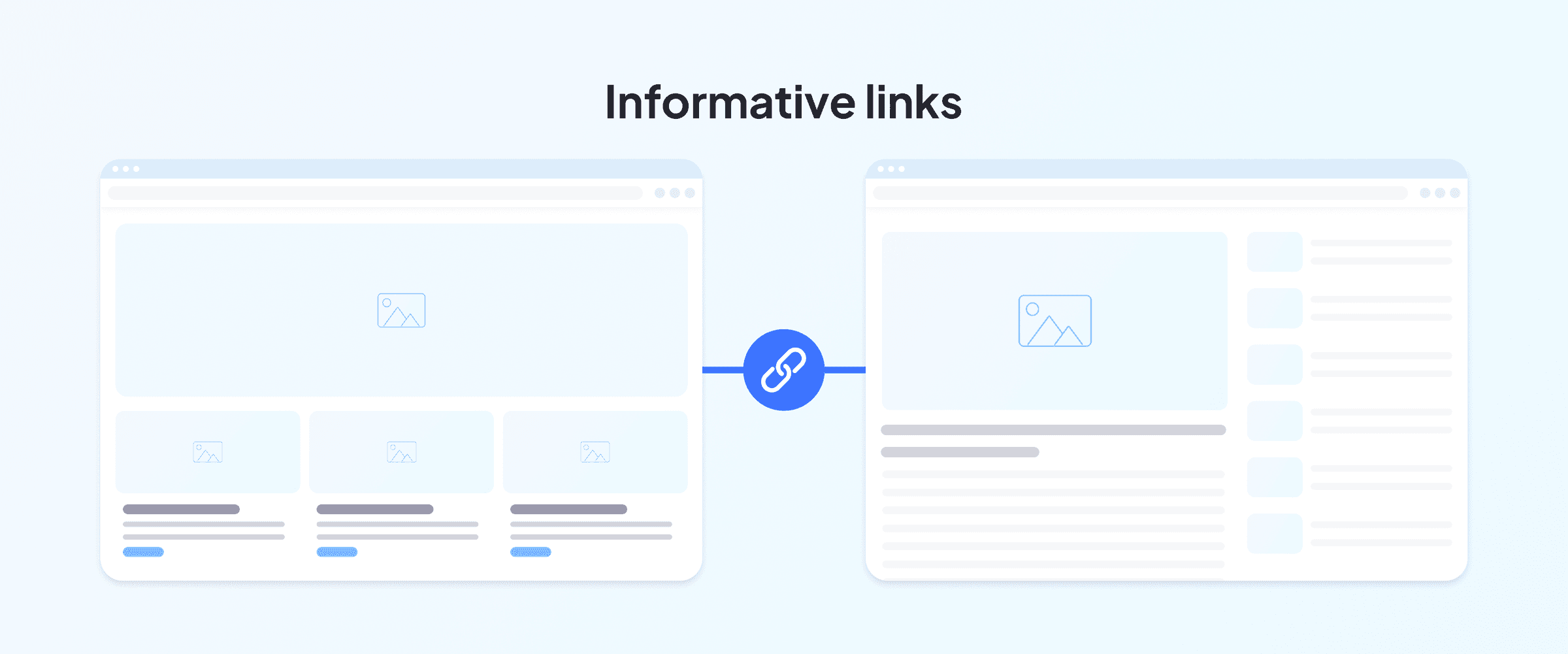
Topic clusters
This is when you have multiple pages that fall under the same subject, and link them to a central "hub" or pillar page that covers the subject in depth
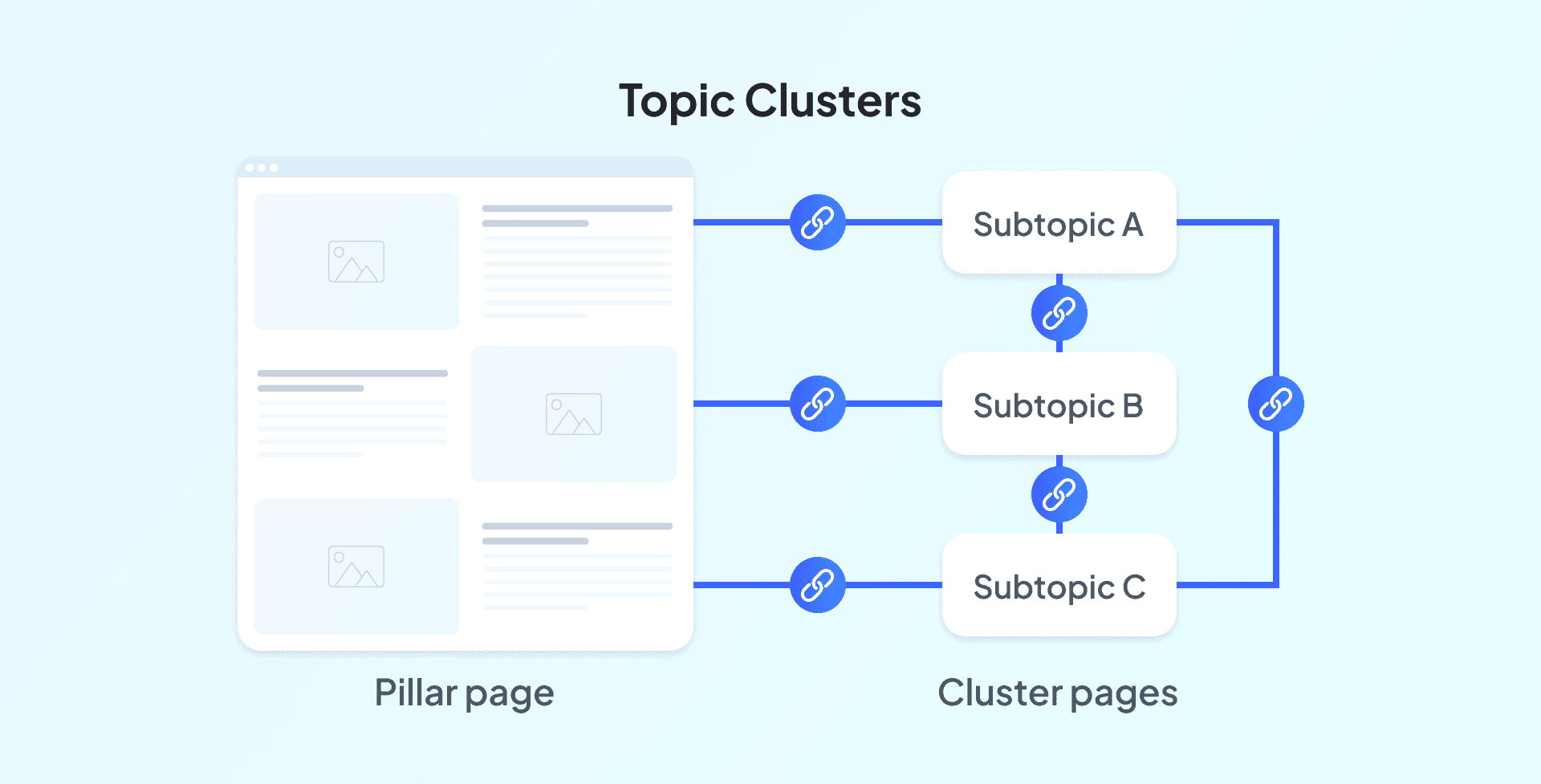
Product/Service links
Sometimes your content is naturally going to talk about your products or services. When that happens, don't be afraid to use an internal link to lead users back to that product/service!
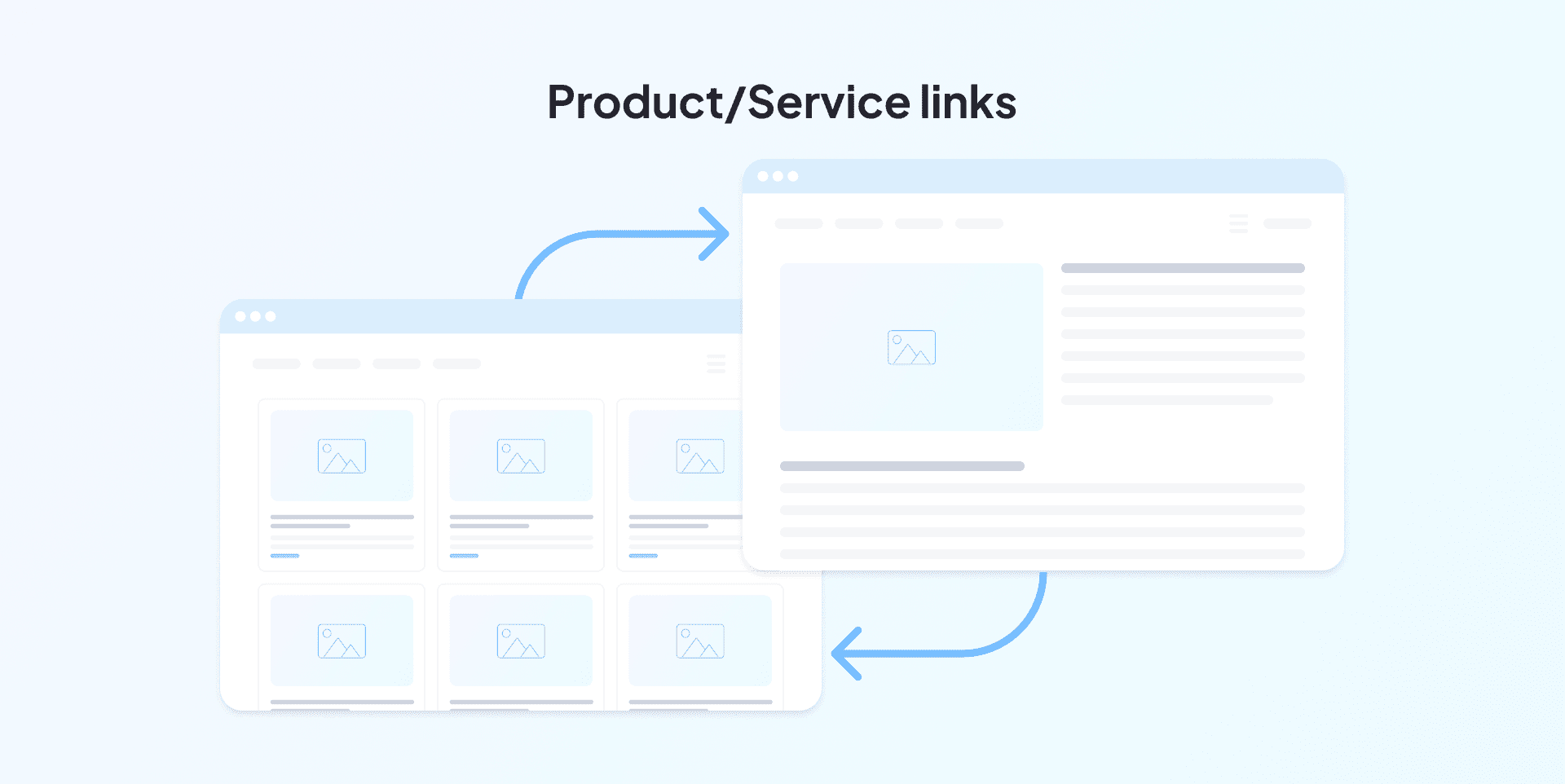
Call to Action (CTA) links
These are links that encourage the user to take action, which could be completing a contact form, a subscription or purchase
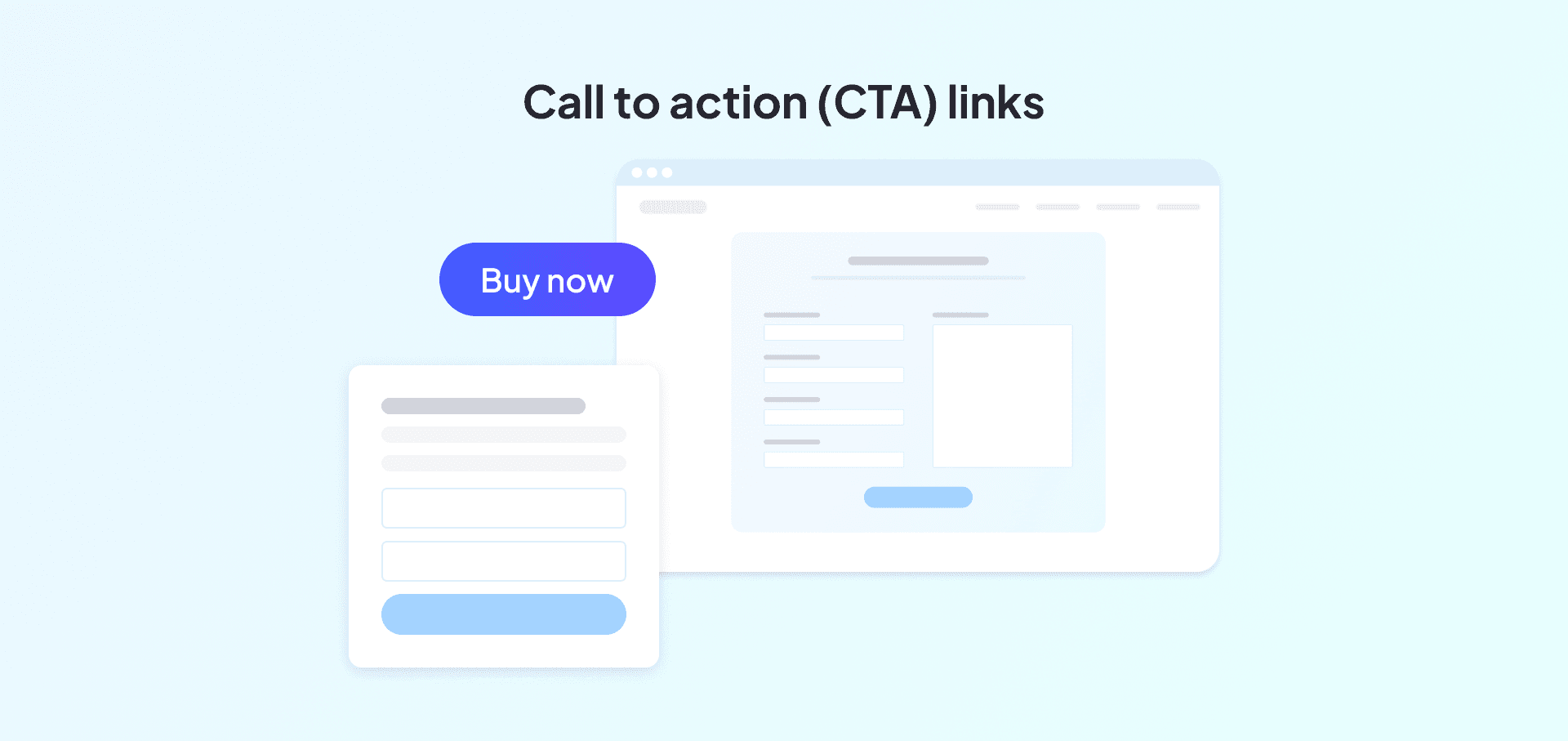
It's also really important that your internal link structure is planned in a way that works with both your page hierarchy and user journey.
Hopefully, you already have an idea of your user's requirements through user testing and UX research. You essentially want to build pathways through your website that organically take users and search engines deeper into your content, and/or further along your sales funnel.
Remember that links are just suggestions, users only click them if they feel they're going to take them to a more relevant page.
It's only spammy if your links are taking people to places they don't want to go, or you're using anchor text that doesn't accurately describe the page you're linking to.
Be sure to regularly audit your site's link structure too, and check for any broken links as part of ongoing website maintenance.
Anchor text
So now we've discussed the value of internal linking, we should really look into one of the most significant elements of a good internal link - anchor text.
What is anchor text?
Anchor text is the word or words you click on which take you to another page or website. It's important for both SEO and UX because it tells search engines and users what the page you're linking to is about.
Why is anchor text important to on-page SEO?
Search engines use your anchor text to understand what the page you're linking to is about.
This means it's absolutely essential to have good, relevant anchor text for your internal links as they're an opportunity to help your page rank for relevant keywords.
Types of anchor text
There are 8 main types of anchor text, Exact, Phrase and Partial match, Synonym, Naked URL, Branded, Random and Image links.
Let's look at how each one works using the same example. We'll use the sentence "Driving with Dogs is a great example of a web design project".
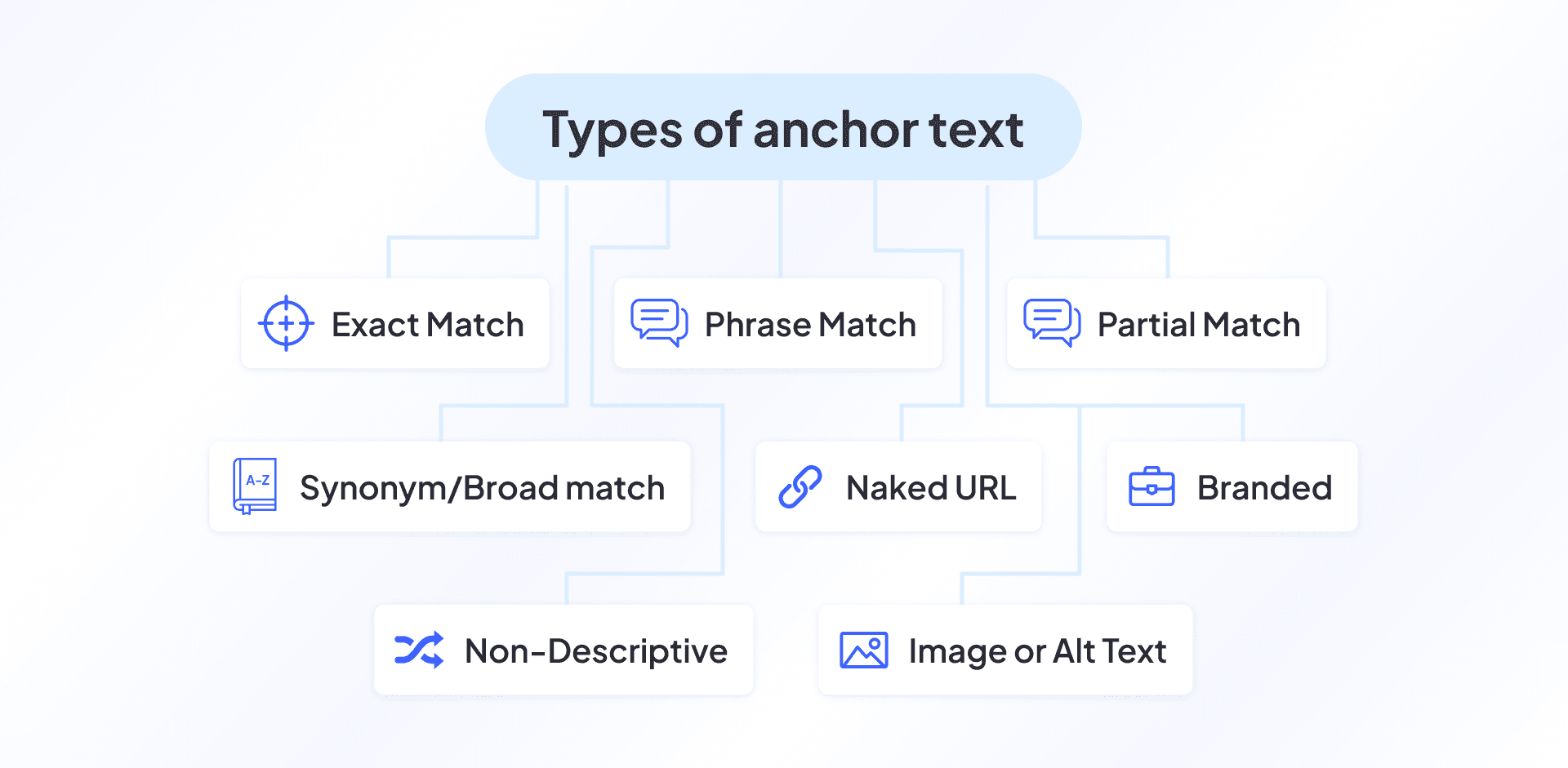
- Exact Match - this means your anchor text is the exact target keyword you're trying to rank for.
Driving with Dogs is a great example of a web design project - Phrase Match - here your anchor text is part of a wider keyword phrase.
Driving with Dogs is a great example of a web design project - Partial Match - your keywords are all in the link, but not in the exact phrase you want to rank for.
Driving with Dogs is a great example of a design project for the web - Synonym or Broad match - for this type of anchor text, you're not necessarily linking the exact phrase you want to rank for, but are using a synonym or related phrase instead.
Driving with Dogs is a great example of a website design project. - Naked URL - this is where you just display the entire URL. It's a bit ugly and not great for SEO either.
Driving with Dogs is a great example of a web design project (https://www.edgeoftheweb.co.uk/our-work/driving-with-dogs) - Branded - branded anchor text links the name of your brand, product or company.
Driving with Dogs is a great example of a web design project by Edge of the Web. - Random or Non-Descriptive - now this sort of anchor text is decidedly unhelpful, and we'll be explaining why in just a moment! Random anchor text doesn't actually give you any context to the page you're going to, it's often a classic "read more" or "click here".
Driving with Dogs is a great example of a web design project, click to find out more. - Image or Alt Text - with this type of anchor text the keywords are actually within the Alt Text of your website images, which link through to a specific page. So in code this would be:
<a href="https://www.edgeoftheweb.co.uk/our-work/driving-with-dogs"> <img src="https://edgeoftheweb.co.uk/uploads/ck_files/dwd-screenshot-branded.png" alt="web design"/> </a>Or
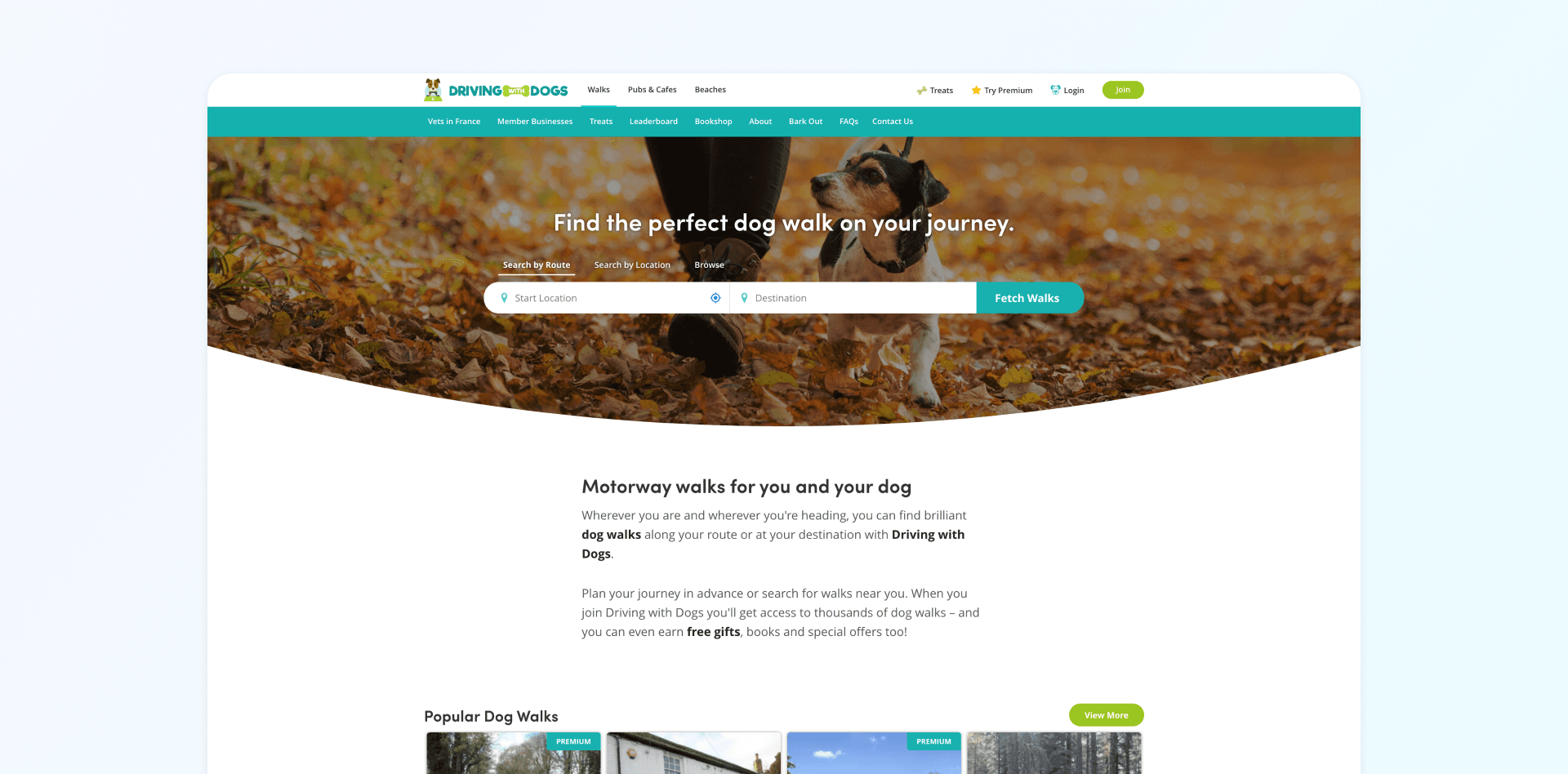
Which type of anchor text you choose will be down to a number of factors, but it's important to consider as part of a wider search engine optimisation and UX writing strategy.
Key facts about internal linking and anchor text
- If there are multiple links on the same page that point to the same location, Google will only count the first link on the page. So that's the link that needs really good, keyword-rich and relevant anchor text.
Any subsequent links to the same page only need to be there if they're going to be helpful to users.
- The specific placement of links is important - links higher up the page are much more likely to be clicked. So if you want to help users access more content, or navigate to your highest converting pages, you want to make sure those links are positioned at the top of your page.
These links usually help users stay on your site longer, reducing your bounce rate. That tells Google that your content is relevant to your user, which can also help your rankings.
- Don't carelessly add hundreds of links per page for the sake of it. Google divides link value between however many links are on a page, so there comes a point where the links stop having significant value.
Plus, the content will become more difficult to read and look pretty spammy if every other word is a link.
The right number of internal links will depend on the length of the content on the page, but you almost certainly want to keep it under 80. That might seem like a lot, but remember that this isn't just links within your content, it includes all the links across the page from the navigation bar to the footer - so if your website already has a lot of pages in the navigation, you're already in including a lot of internal links.
The best strategy is simply to use internal links where they feel natural, and where they can get users to the next stage of their journey.
- Use unique anchor text for links to different pages. You don't want to be telling Google that both pages you're linking to are about the same topic. Make sure the anchor text for each page is unique and relevant to that page's content.
- Make sure your internal links don't use the "nofollow" attribute - otherwise, they won't be passing on SEO value.
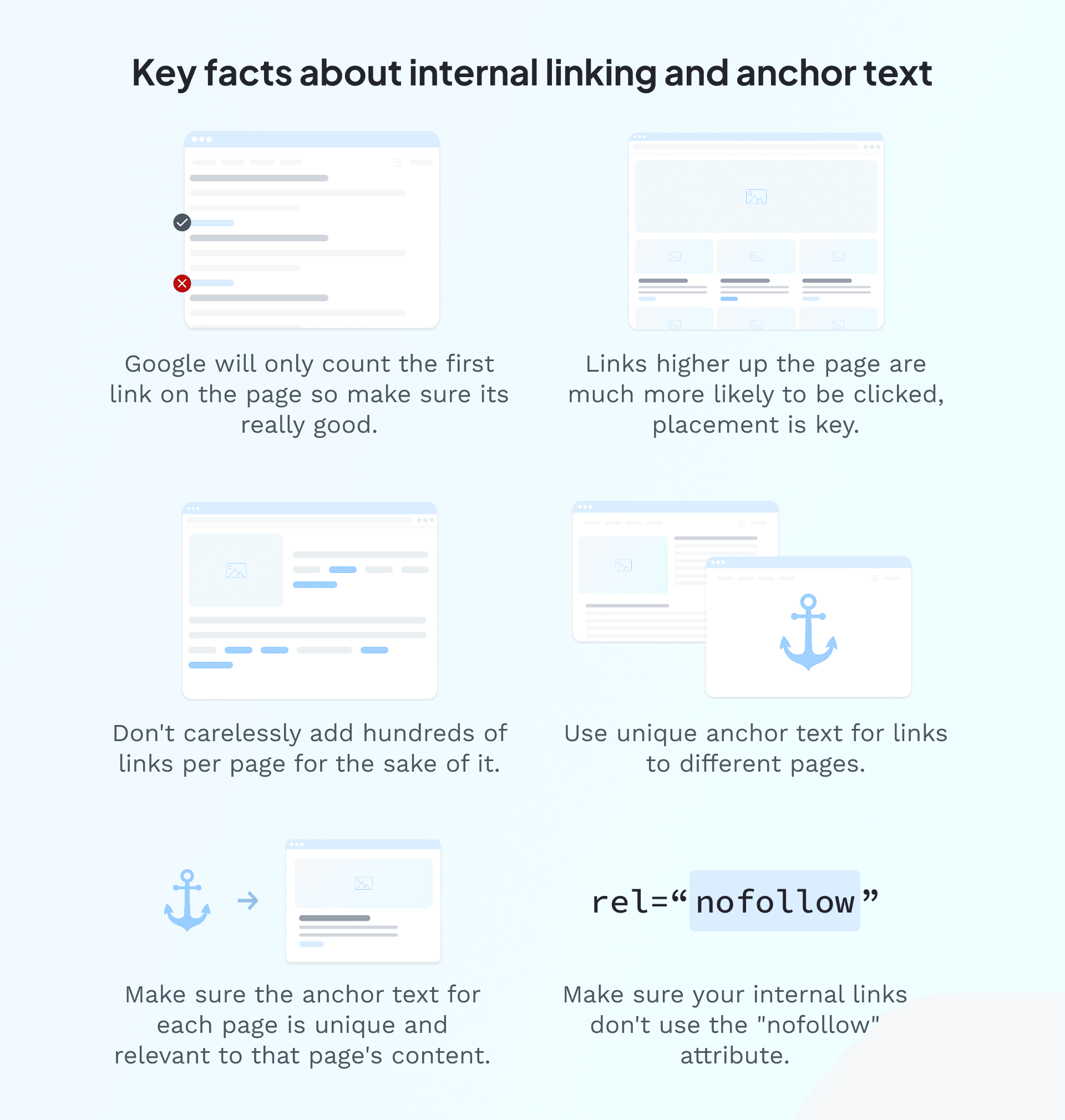
The impact of better anchor text and internal links: an example
So, now you know all about internal links and anchor text, the big question really is "how much of an impact do they really make?"
Well, let us explain to you how we created a massive increase in traffic to a client's website, with one tiny change.
The anchor text opportunity
One of our clients is a local blind supplier and fitter - Leamington Blinds. They already had a website developed by a third party and asked us to do some SEO and online marketing work for them.
We made one simple internal linking change that increased users on that section by 88% and, for key pages within that section, by over 500%.
That tiny change was simply this: updating the anchor text on the main News page.
You see, on Leamington Blinds' main News page, the articles were listed with helpful "Continue Reading" buttons for users who were interested.
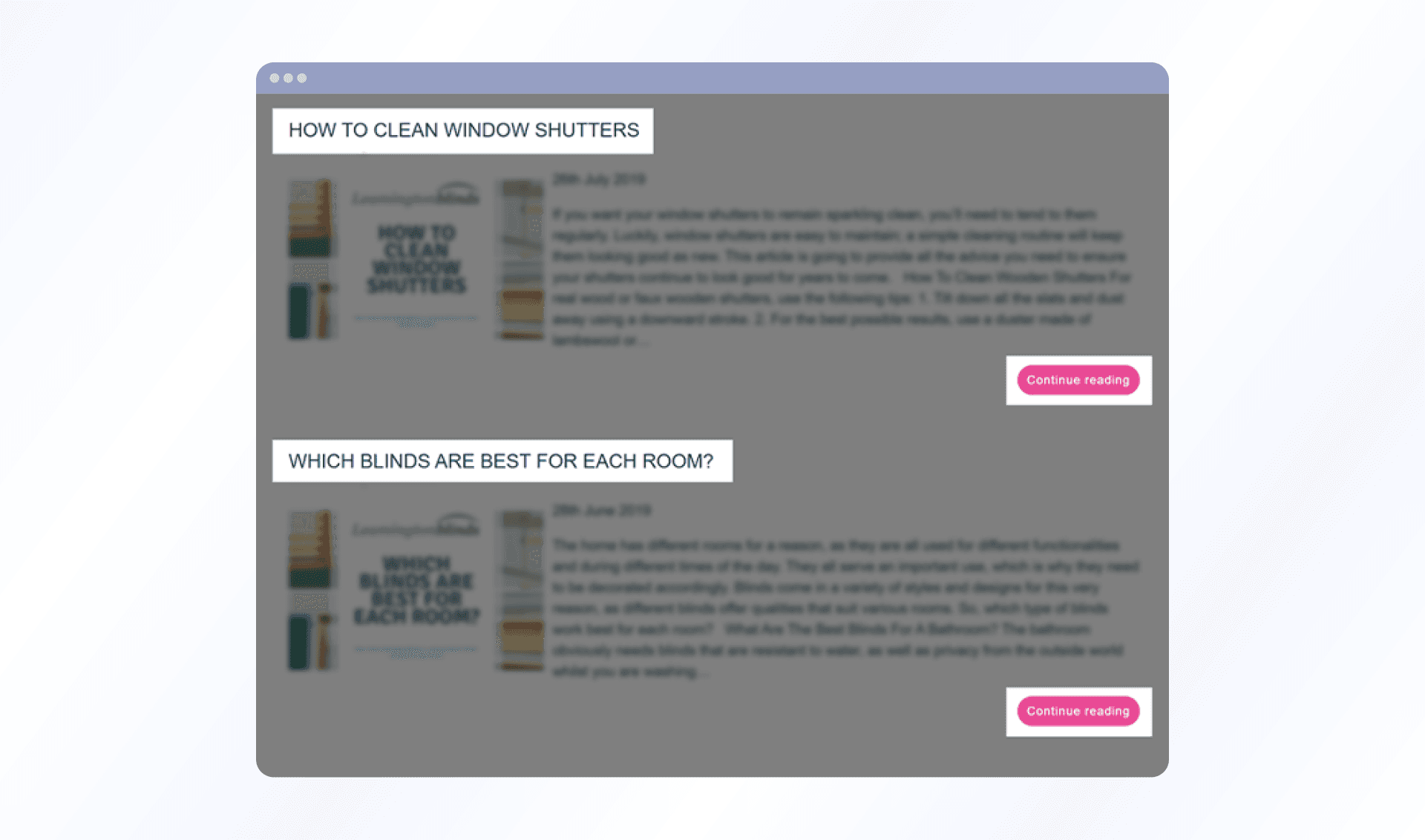
The titles of the articles weren't linked on the main News page.
But as we learned earlier in this article, "continue reading" isn't text that helps search engines understand what that linked page is about. The article title itself was not linked - not ideal.
It was a wasted opportunity.
The small change we made was to link the title text of each article on the main News page. So now instead of a page being linked by "continue reading", it's suddenly linked by all the lovely keywords in the article's title.
Better anchor text - the results
Within a month of making this simple change, we noticed a significant impact on the website's key metrics.
Google Search Console has shown a sustained increase in both impressions and clicks to news pages.
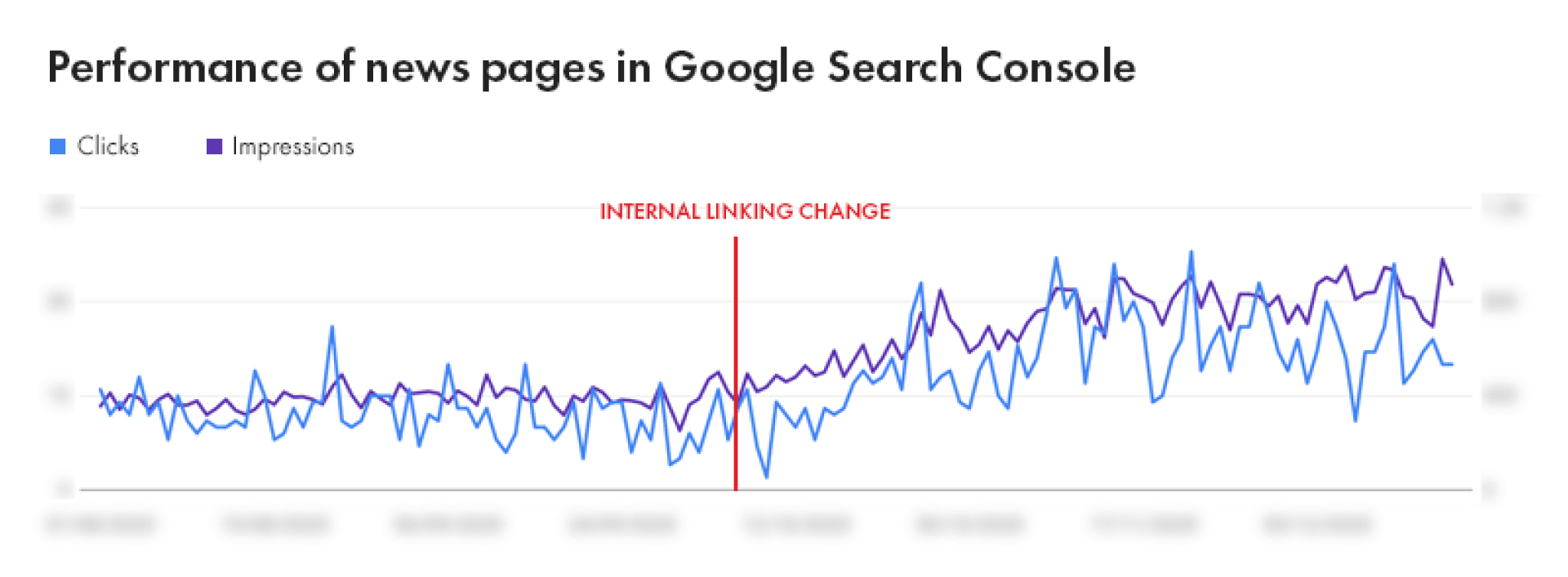
Screenshot from Google Search Console showing the increase in organic reach
This translated to an increase in organic traffic finding the website via content on the news section - an increase of 88% compared to the previous months.

Google Analytics screenshot showing improvement in traffic to news pages
This also increased the overall numbers for the website at a period of the year that's often quiet even in a normal year - without Covid to contend with! There would typically be a drop in traffic as we enter the winter months, but instead, we saw a steady increase until the Christmas period.
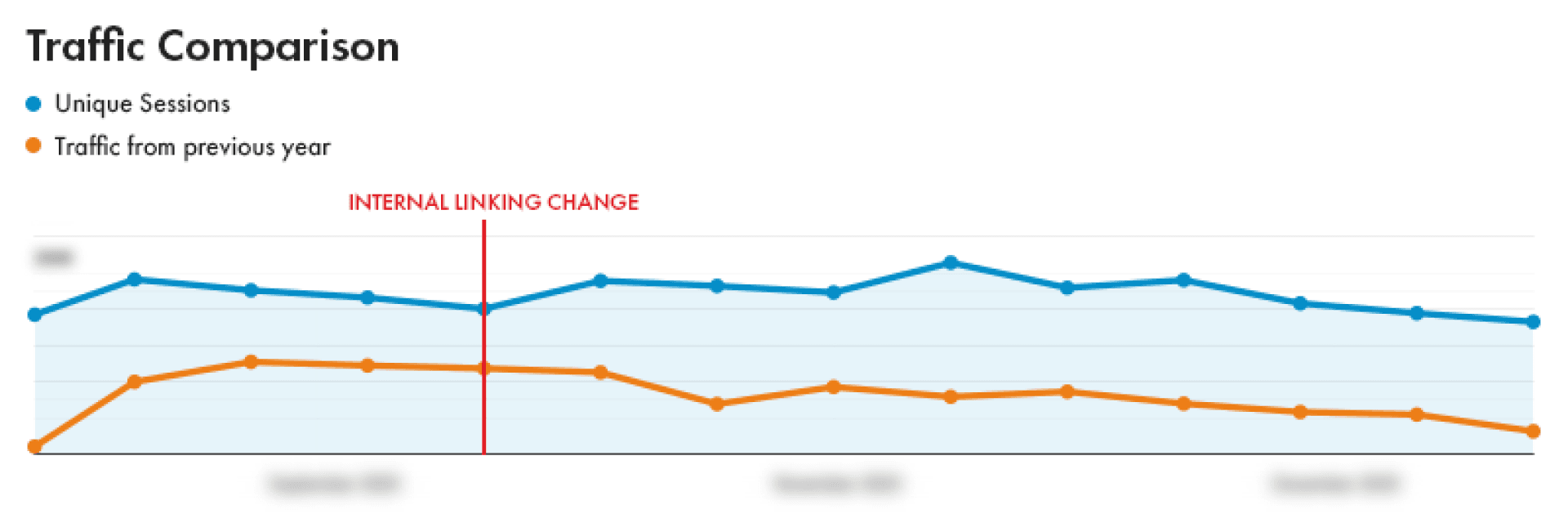
Google Analytics screenshot showing improvement in traffic to the entire website
Not only that, but some existing news pages got a huge boost too.
One particular article on how to take down blinds shot up from 125 unique page views to 840 - within 2 months.
That's a 572% increase!
Just from making one simple change.
Why you should improve your anchor text and internal linking
So, considering how little work it can take to improve your anchor links and how massive the impact can be, it's clearly a good idea to invest a little time in your internal linking strategy.
Remember that the key rules for creating your internal linking plan are:
- Create paths that lead where users want to go
- Make sure you keep your site hierarchy in mind
- Use relevant anchor text to help users and search engines understand the content on your target pages
- Never forget that at the end of the day, users come before search engines. Don't create internal links just for the sake of it. Use them organically to help your users along the way, not to spam up your site for the sake of SEO
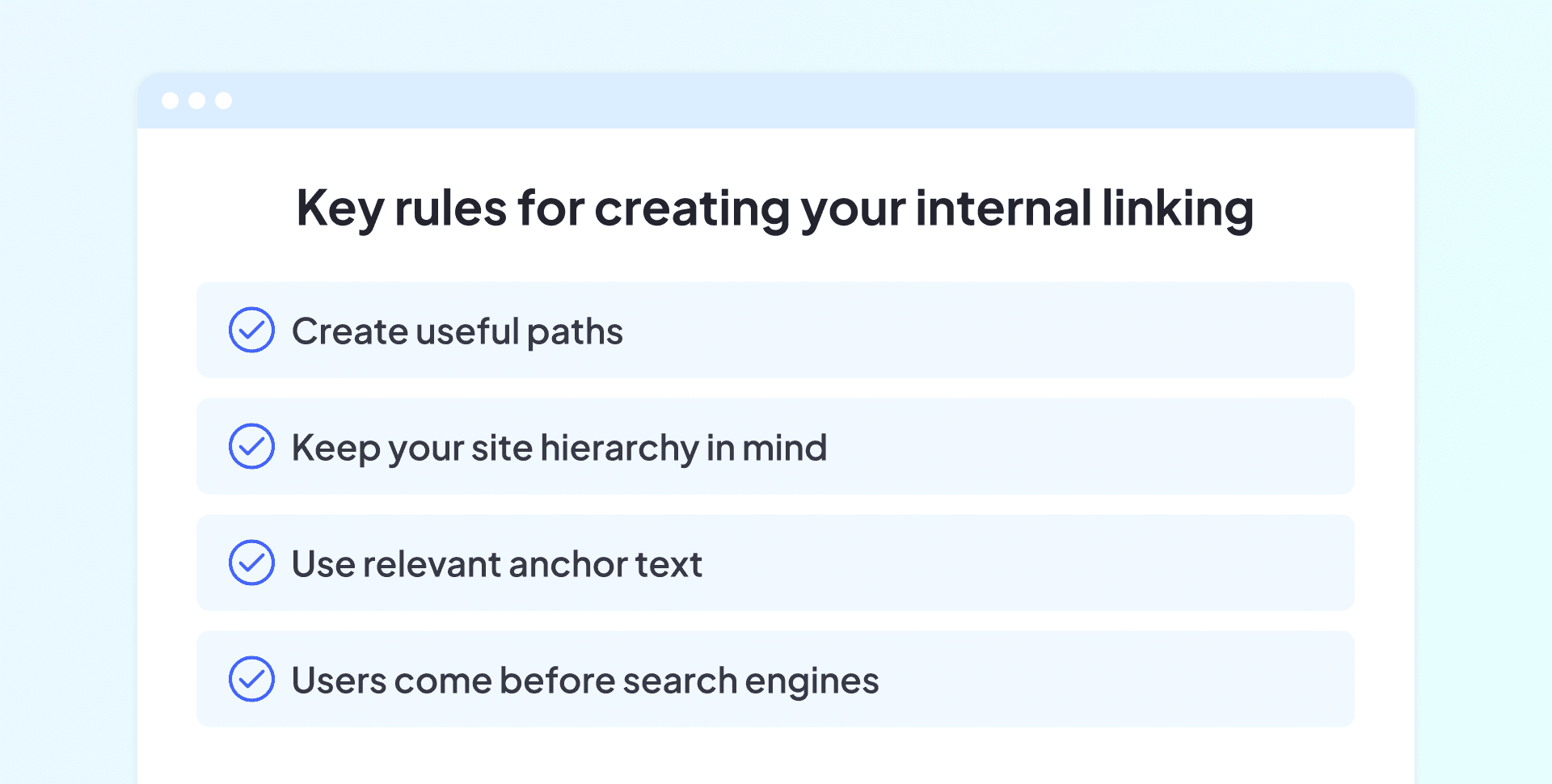
Most websites will have some great opportunities for helpful internal linking, or anchor text that really needs an update.
All it takes is a little time, and as we've already seen, the rewards can be huge. So we highly recommend giving your website an internal linking audit, and seeing where you can make gains in both UX and SEO.
And if you'd like a little help with your SEO and online marketing, we'd love to hear from you.

